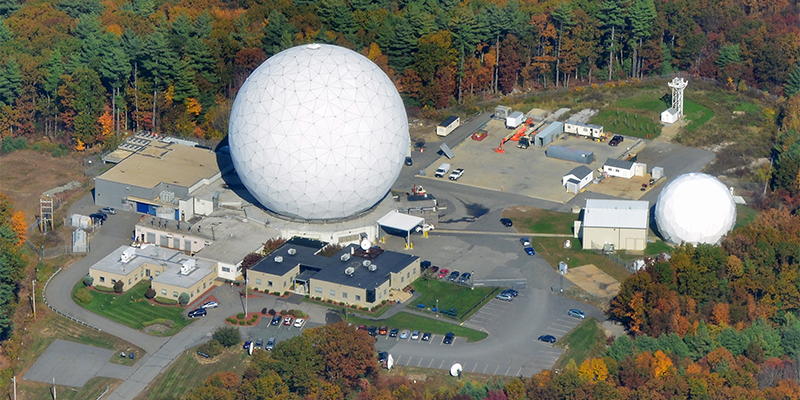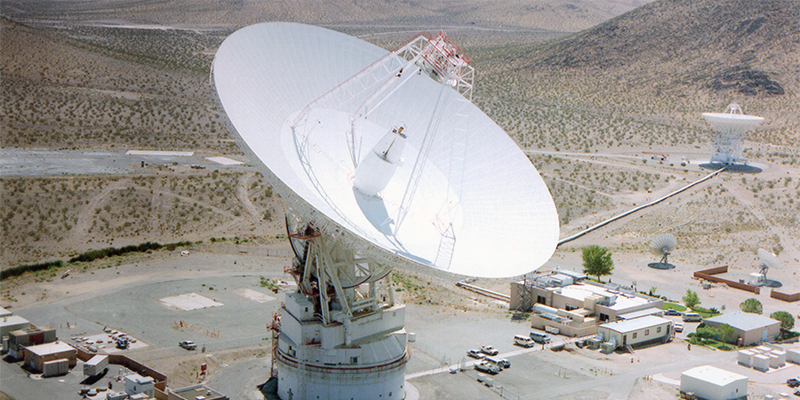Radar Measurements
The Orbital Debris Program Office (ODPO) is responsible for characterizing objects too small to be tracked by the U.S. Combined Space Operations Center’s (CSpOC) Space Surveillance Network (SSN), but large enough to threaten human spaceflight and robotic missions. To accomplish this objective, the ODPO utilizes ground-based radars to statistically characterize the low Earth orbit debris environment.

Haystack and HAX radars are NASA's primary sources of data on
centimeter-sized orbital debris. Credit: MIT Lincoln Laboratory,
Lexington, MA.
NASA's main source of data for debris in the size range of approximately 5 mm to 30 cm is the Haystack Ultrawideband Satellite Imaging Radar (HUSIR). The HUSIR radar, operated by the Massachusetts Institute of Technology’s Lincoln Laboratory, has been collecting orbital debris data for the ODPO since 1990 under an agreement with the U.S. Department of Defense. HUSIR statistically samples the debris population by "staring" at selected pointing angles and detecting debris that fly through its field-of-view.
The data are used to characterize the debris population by size, altitude, and inclination. From these measurements, scientists have concluded that there are approximately 500,000 debris fragments in orbit with sizes down to one centimeter. The NASA ODPO also collects data from the Haystack Auxiliary Radar (HAX) located next to the main HUSIR antenna. Although HAX is less sensitive than HUSIR, it operates at a different wavelength (1.8 cm for HAX versus 3 cm for HUSIR) and has a wider field-of-view.

The 70 meter antenna at Goldstone, California against the background of the Mojave Desert.
Credit: NASA JPL. Website: https://deepspace.jpl.nasa.gov/gallery/
Since 1990, the Goldstone Orbital Debris Radar has collected orbital debris data for debris as small as about 2 mm in LEO for the NASA ODPO. It is located in the Goldstone Deep Space Communications Complex in the Mojave Desert near Barstow, California and is operated by NASA’s Jet Propulsion Laboratory. The Goldstone Orbital Debris Radar is an extremely sensitive sensor capable of detecting a 3-mm metallic sphere at 1000 km, which makes it an incredibly useful tool in the characterization of the sub-centimeter-sized debris population.